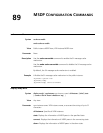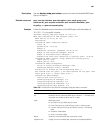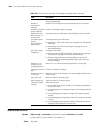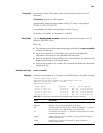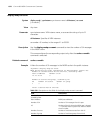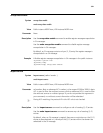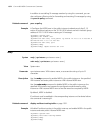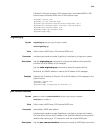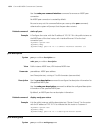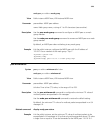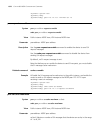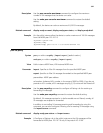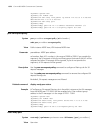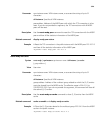
1372 CHAPTER 89: MSDP CONFIGURATION COMMANDS
In addition to controlling SA message creation by using this command, you can
also configure a filtering rule for forwarding and receiving SA messages by using
the peer sa-policy command.
Related command: peer sa-policy.
Example # Configure the MSDP peer in the public instance to advertise only the (S, G)
entries of multicast sources on the 10.10.0.0/16 subnet and with multicast group
address of 225.1.0.0/16 when creating an SA message.
<Sysname> system-view
[Sysname] acl number 3101
[Sysname-acl-adv-3101] rule permit ip source 10.10.0.0 0.0.255.255 d
estination 225.1.0.0 0.0.255.255
[Sysname-acl-adv-3101] quit
[Sysname] msdp
[Sysname-msdp] import-source acl 3101
msdp
Syntax msdp [ vpn-instance vpn-instance-name ]
undo msdp [ vpn-instance vpn-instance-name ]
View System view
Parameter vpn-instance-name: VPN instance name, a case sensitive string of up to 31
characters.
Description Use the
msdp command to enable MSDP in the public instance or the specified
VPN instance and enter public instance or VPN instance MSDP view.
Use the
undo msdp command to disable MSDP in the public instance or the
specified VPN instance and remove the configurations performed in public
instance or VPN instance MSDP view to free the resources occupied by MSDP.
By default, MSDP is disabled.
IP multicast must be enabled in the corresponding instance on the device before
this command is meaningful.
Related command: display multicast routing-table on page 1331.
Example # Enable IP multicast routing in the public instance, and enable MSDP in the public
instance and enter public instance MSDP view.
<Sysname> system-view
[Sysname] multicast routing-enable
[Sysname] msdp
[Sysname-msdp]




